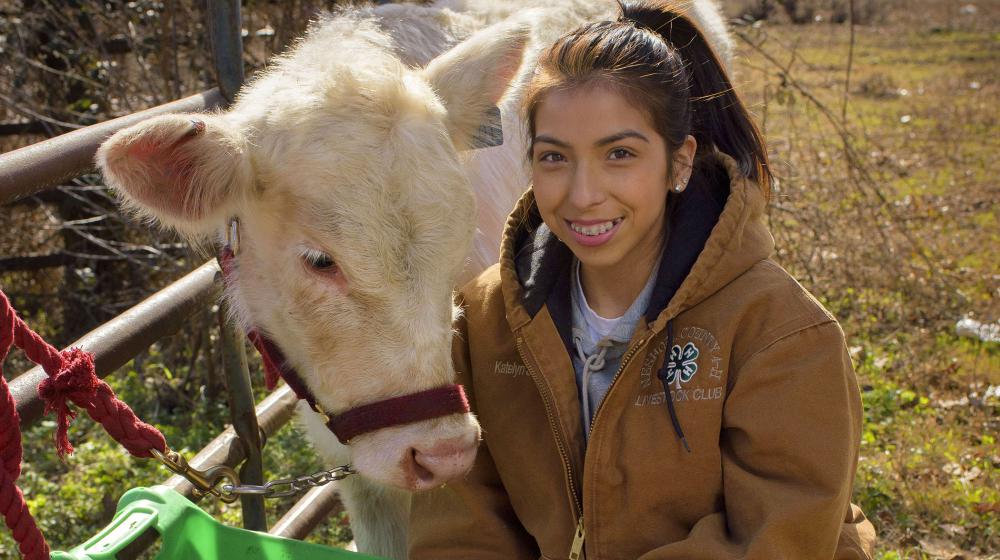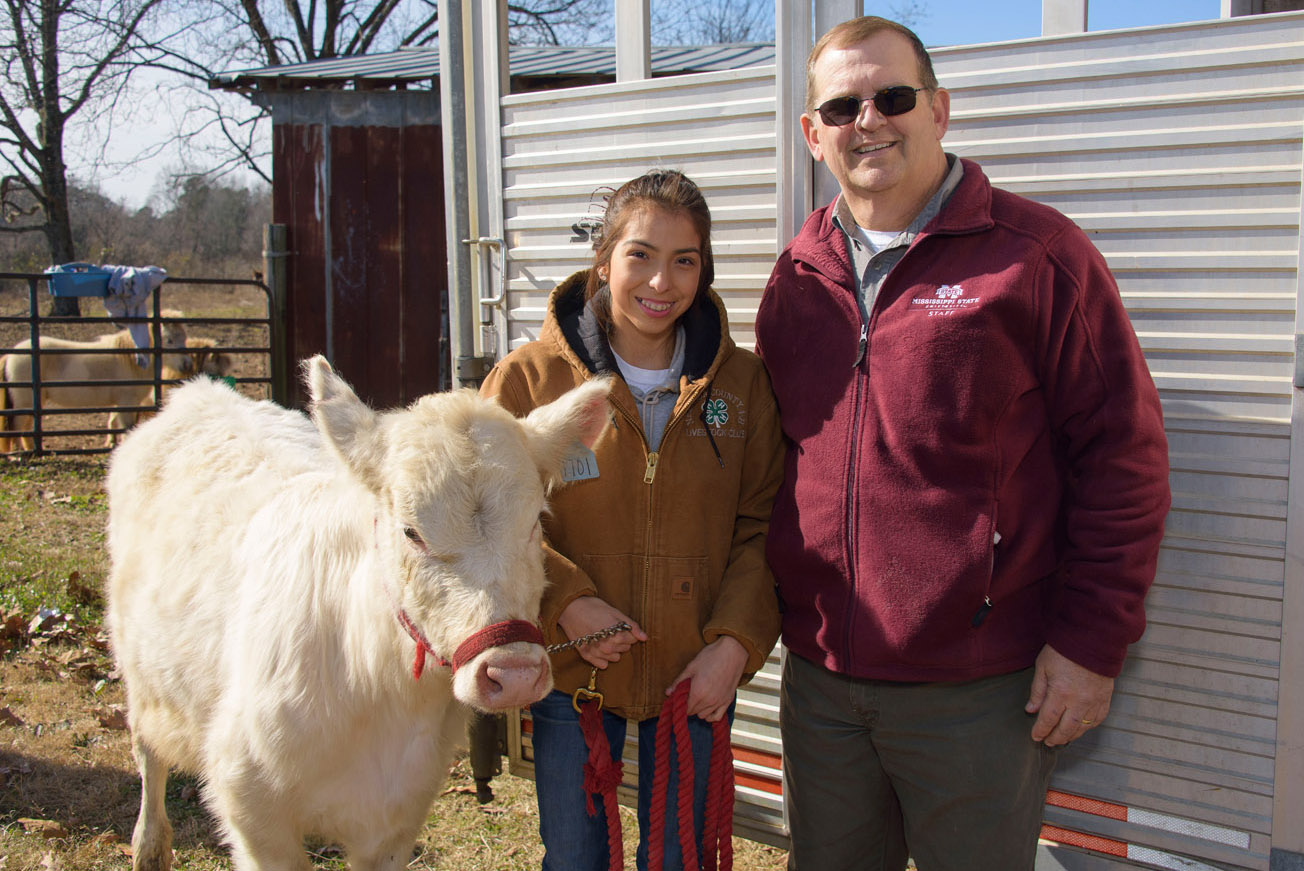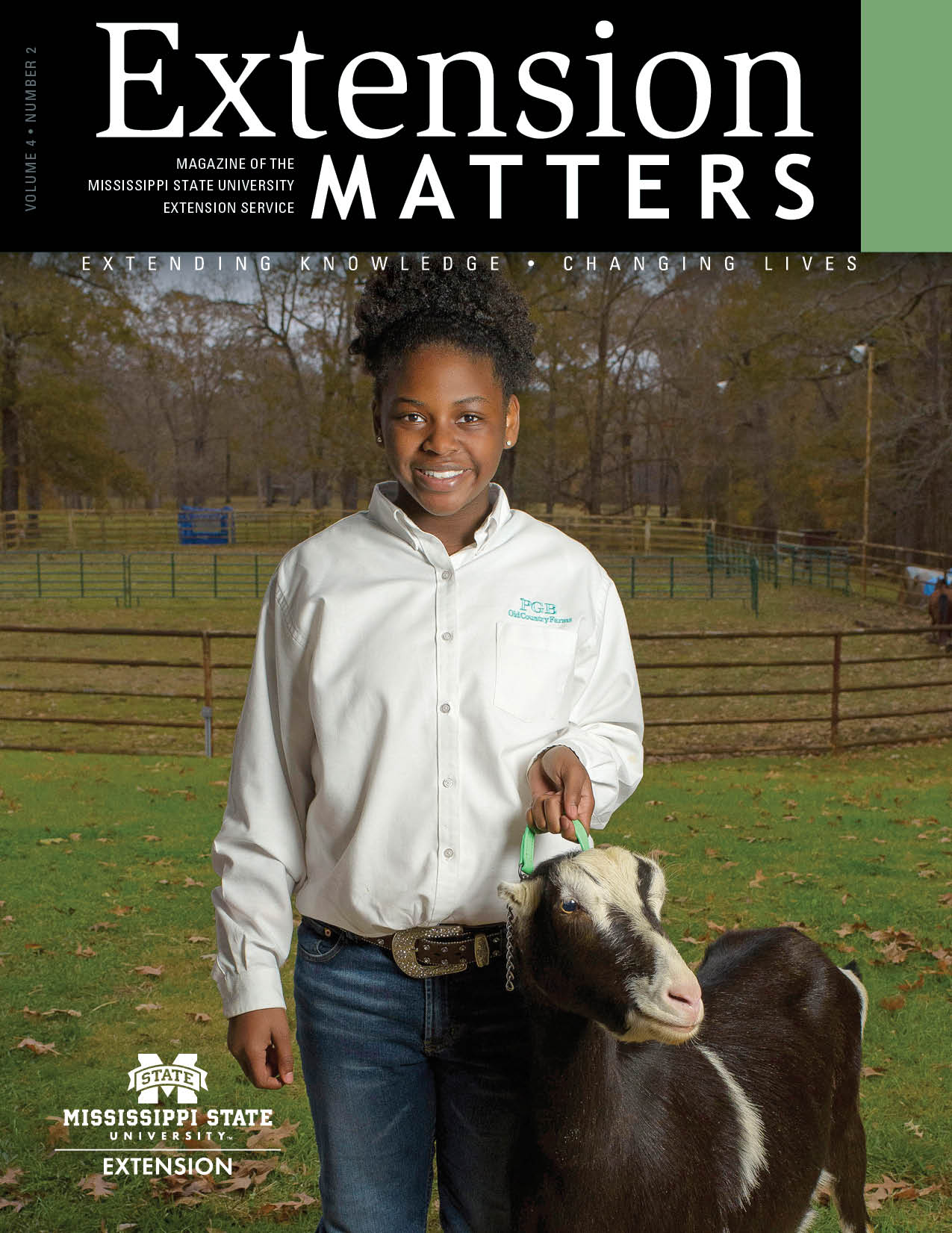Honoring Her Ancestors

Katelyn Shoemake, a Neshoba County 4-H’er
4-H’er Follows Agricultural Path to Success
Story by Nathan Gregory • Photos by Kevin Hudson
Fun fact about Mississippi State University Extension Service 4-H’er Katelyn Shoemake: she is currently the only Native American in the state showing livestock.
The Choctaw Central High School senior credits her experience as a 4-H member since the age of 8 and her family’s involvement in agriculture for her interest in livestock. After finishing high school, Shoemake plans to go to college, with the goal of pursuing a law degree and practicing agricultural law.
Jim McAdory
“4-H and FFA have opened a lot of doors for me for my future career,” Shoemake says. “My mom talked me into a career in agriculture. My ancestors in my tribe were also in agriculture, so it’s my way of giving back to them.”
Her family is one of few in the Mississippi Band of Choctaw Indians active in agriculture, raising horses and cattle.
The junior livestock program is one of the best known components of 4-H, which is one of the largest informal educational and leadership organizations in the country for children ages 5 to 18. Each year, more than 7,000 Mississippi 4-H’ers participate in animal science projects involving cows, sheep, swine, and goats.
Extension coordinates 4-H activities and events for the state, including junior livestock showing competitions. These contests are held at the county, district, and statewide levels. The major shows are at the Mississippi State Fair in October and the Dixie National Junior Round-Up in February.

Shoemake and her Charolais show cow, Miss Terrific Suspect, took home a blue ribbon after placing first in their division at the state fair, qualifying her for the Round-Up.
Bert Gilmore, MSU Extension agent in Neshoba County, works with 4-H’ers throughout the year as they prepare for competitions. The everyday responsibilities of that preparation, including feeding, care, and training, teach young people valuable life skills as they develop into adulthood.
“I like Katelyn’s energy,” Gilmore says. “I have to do a lot of things to help some of the students make sure they are where they are supposed to be in the process of raising and training their animals. Katelyn doesn’t fall under that category. I think a lot of that comes from her family’s involvement in the livestock scene.”
Shoemake says one of the keys to raising a prize heifer is patience.
“People tell me all the time that it looks so easy, but they don’t know what it’s like behind the curtains,” she explains. “You have to take it step by step and go through the motions of cleaning the calf, brushing her, getting her clipped, and preparing her for the walk in the show ring.”
Shoemake isn’t the only member of her family with a background in 4-H. All of her siblings, including her older sister, Emily, are former 4-H’ers. A former Choctaw Indian Princess, Emily is also the first Choctaw to enroll in the College of Agriculture and Life Sciences at MSU.
Being in the show ring, getting ready for college, and preparing to compete in the princess pageant herself, Katelyn has to manage her time wisely—something she says her 4-H and FFA mentors help her with.
“They make everything possible,” she says. “They work around my schedule because, as a senior, I don’t have much time off, from preparing for the ACT to getting ready for the pageant,” she says. “I’m thankful for everything they do.”
Jim McAdory, Extension agent for the Choctaw tribe, said Shoemake’s accolades as a competitor and her drive to achieve her goals make her an exemplary representative for 4-H and an ideal example for younger girls in the tribe.
“Katelyn is a role model for these tribal kids and someone we want to see them emulate,” McAdory said. “Her hard work has put her on a path to success."


